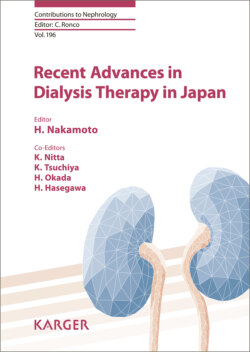Читать книгу Recent Advances in Dialysis Therapy in Japan - Группа авторов - Страница 87
На сайте Литреса книга снята с продажи.
Drug Treatment Oral Hypoglycemic Agents
ОглавлениеSulfonylureas are contraindicated for use in dialysis patients in Japan [13]. The reason is that hypoglycemia tends to occur due to the accumulation of active metabolites, and when hypoglycemia occurs, it may be prolonged. Biguanide is contraindicated for patients with impaired kidney function, including dialysis patients, because severe lactic acidosis may occur as an adverse effect.
Thiazolidinedione is contraindicated for use in dialysis patients in Japan. Among α-glucosidase inhibitors, voglibose and acarbose can be used in dialysis patients at the usual doses. Miglitol is absorbed in the small intestine and increases in blood concentration are observed, so careful administration is necessary. Among fast-acting insulin secretagogues, nateglinide is contraindicated because of the high frequency of hypoglycemia in dialysis patients. Mitiglinide and repaglinide can also be used for dialysis patients, but careful administration is required. Among the dipeptidyl peptidase-4 (DPP-4) inhibitors, linagliptin and teneligliptin can be used in dialysis patients at regular doses. Sitagliptin, vildagliptin, alogliptin, anagliptin, and saxagliptin need dose control and should be used with caution. Among the long-acting DPP4 inhibitors administered once a week, trelagliptin is contraindicated for use in dialysis patients, but omarigliptin can be used in dialysis patients at a reduced dose. A randomized double-blind trial examined omarigliptin versus placebo in patients with type 2 diabetes with impaired kidney function including those on dialysis. Compared with placebo, omarigliptin provided clinically meaningful reductions in HbA1c, was associated with a similar incidence of symptomatic hypoglycemia, and was generally well tolerated [14]. The advent of a long-acting diabetes medication that can be used in dialysis patients allowed for direct administration in the dialysis clinic to patients with poor medication adherence or difficulties with self-management. This may be useful for treatment of diabetes patients on dialysis who had difficulty in managing plasma glucose levels by conventional methods. A sodium glucose cotransporter 2 (SGLT2) inhibitor cannot be used because it is ineffective in dialysis patients who have no kidney function. Detailed doses of different types of oral hypoglycemic agents are shown in Table 1.
